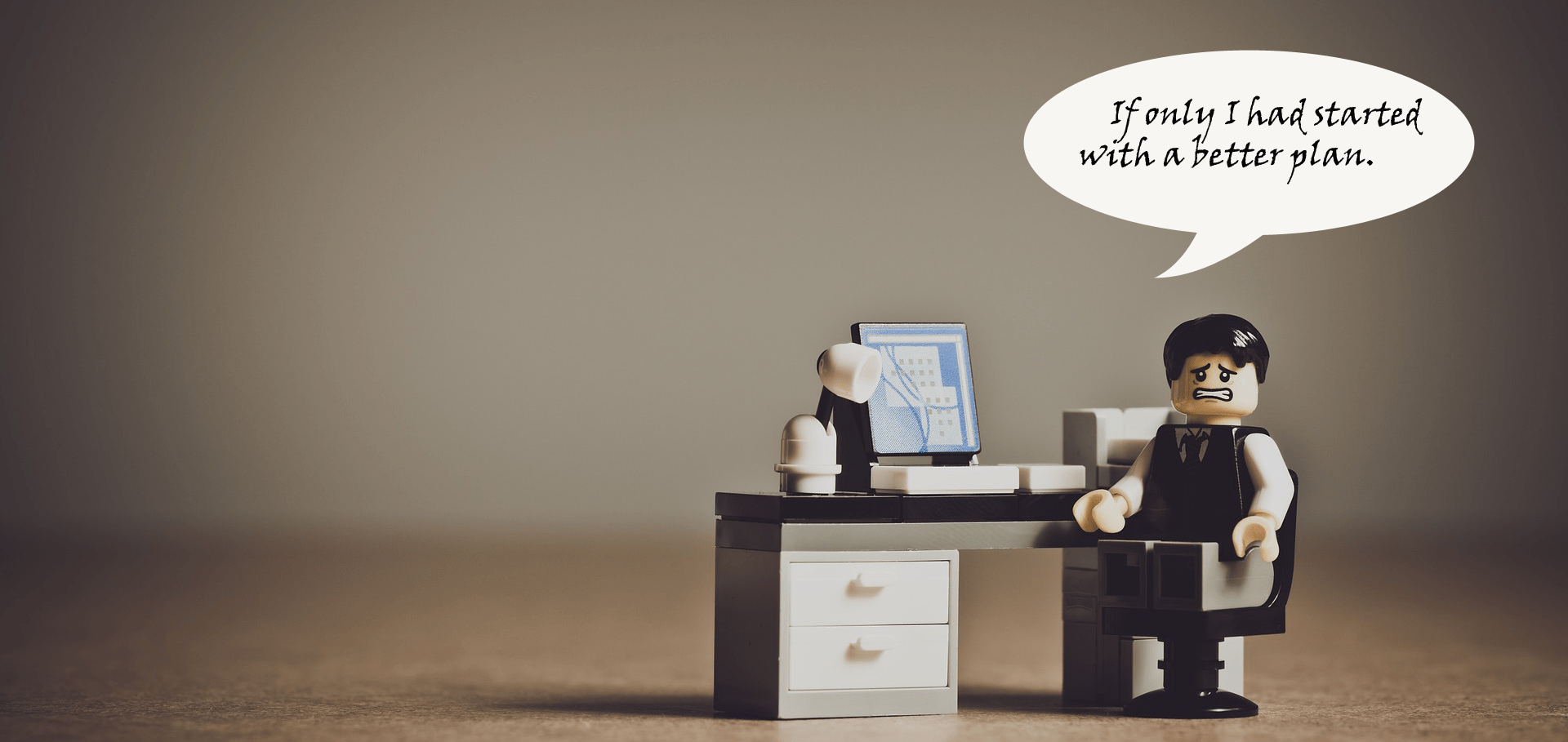
Building a new website can be a stressful process. Even if you know what you want, you are in the hands of the web designer you choose to work with. Like any creative relationship, this can involve misunderstandings, stress and anger, if you don’t get the foundations of the project right from the start.
As a web designer and front end web developer, with 17 years experience, here are my top seven traps to avoid, if you want your website project to be a stress free process.
1. Start you project with no specification or project plan
Without a proper specification you risk serious delays and spiraling costs. That does not mean you have to have every detail set in stone. If you need help, an experienced designer can advice and refine the finer details of your website specification. That said, some detail have to come from you. Without at least a basic idea of what you want, you risk adding features half way through a project. Feature creep is the main cause of increased project costs. At best this could increase costs and at worst push your project outside your original budget.
2. Only deal with your designer via email
We live in a digital world where everything can be done via email. I recommend that even if you don’t meet face to face, you at least have a telephone call before hiring a new web designer.
A proper conversation with your web designer, will allow you to judge if you are on the same wave length. You don’t have to become best friends. However, you do need to decide if you can work with this person effectively.
A bad working relationship, in the middle of your project, could delay your launch, or even stall your project altogether.
3. Don't include budget for images and photography
There are some great resources for royalty free imagery on the web. I’m a big fan of pixabay.com. However, inevitably, you are going to find you need to pay for an image, or arrange for a photographer to takes some new images for you. Don’t leave a contingency for that in your budget and your design process may stall at the first hurdle.
4. Rush the process or have unrealistic timescales
In the real world project timescales can shift. Specifications can change, or pressures in your day to day business, can mean you have to shift focus from your website build.
- Does you designer have enough time to take on your project?
- Do you or your staff have enough time to write any content needed?
- If you need to hire a photographer when are they available.
I always build in at least a 30% buffer for any project. For larger projects this may be increased. If your website launch is time sensitive, make sure you are not being overly ambitious in your initial specification.
Looming launch dates, can cause unneeded stress, if your project slips.
5. You will live to regret choosing the cheapest web hosting company
Cheap badly resources shared web hosting can make even the best designed website under perform. While most websites won’t need a dedicated web server, it is worth considering the reputation of your web hosting company. Read the reviews do people complain abut bad support, regular downtime and slow running websites.
You might be restricted by budget, but a little bit of research will save you pain later.
6. Rush the content writing for your website.
Content is always the main factor that delays any website launch. Plan out your website structure from the start. Don’t leave writing content until the end of your project. Once you have content written, start refining it for search engine optimization, make sure you have built in ‘calls to action’ that will encourage your visitors to interact with your business.
70% of your effort should be put into the content of your website. An attractive design will fail, if your content is sparse and ill thought out.
If you really don’t have the time or skills to create your own content consider weather you need to hire a professional copy writer.
7. Have no marketing plan for your website post launch
You may think you have the best website ever, but if you don’t have a ongoing marketing plan, to get people to your website, all that investment of money and time will be a waste. Plan out your promotion activity for the weeks and months after you launch.
- Build a plan for blog posts
- Link Social media activity with new content and special offer
- Google ads may be worth considering, while your website builds it’s page ranking.
Taking the time to plan your project avid these pitfalls will put you on your way to a successful website.
Need some help?
Why not download the FREE website planing workbook? I won’t even ask you for your email address.


